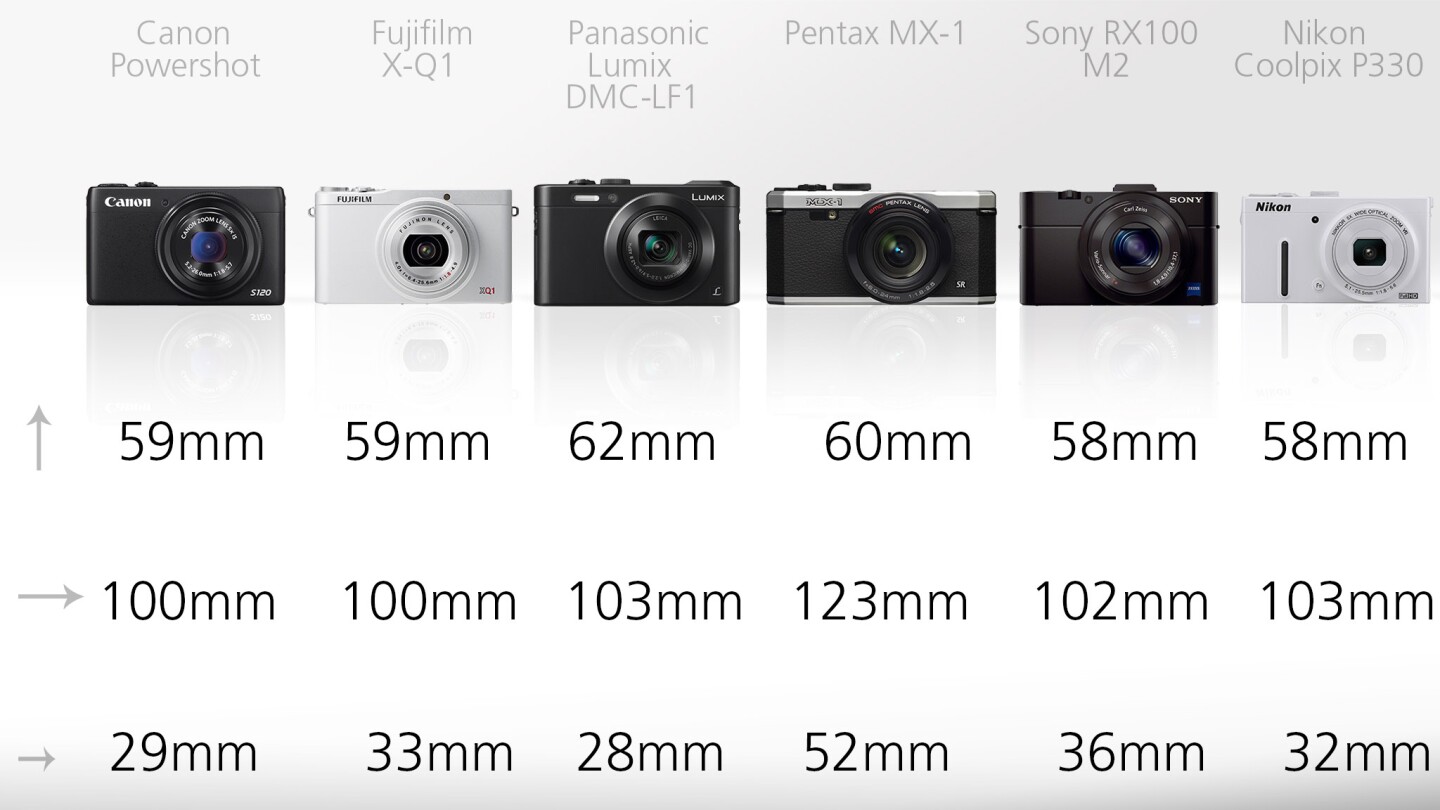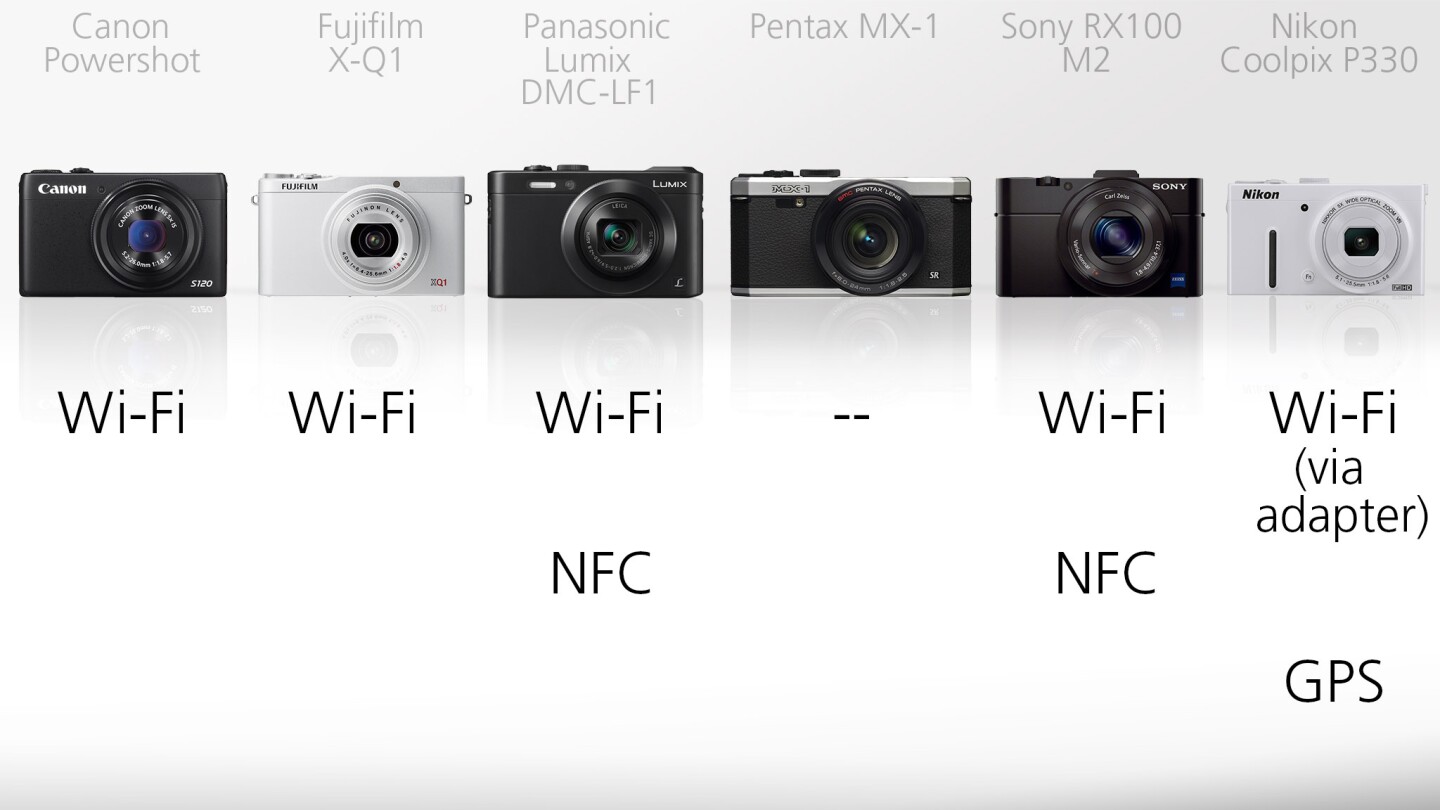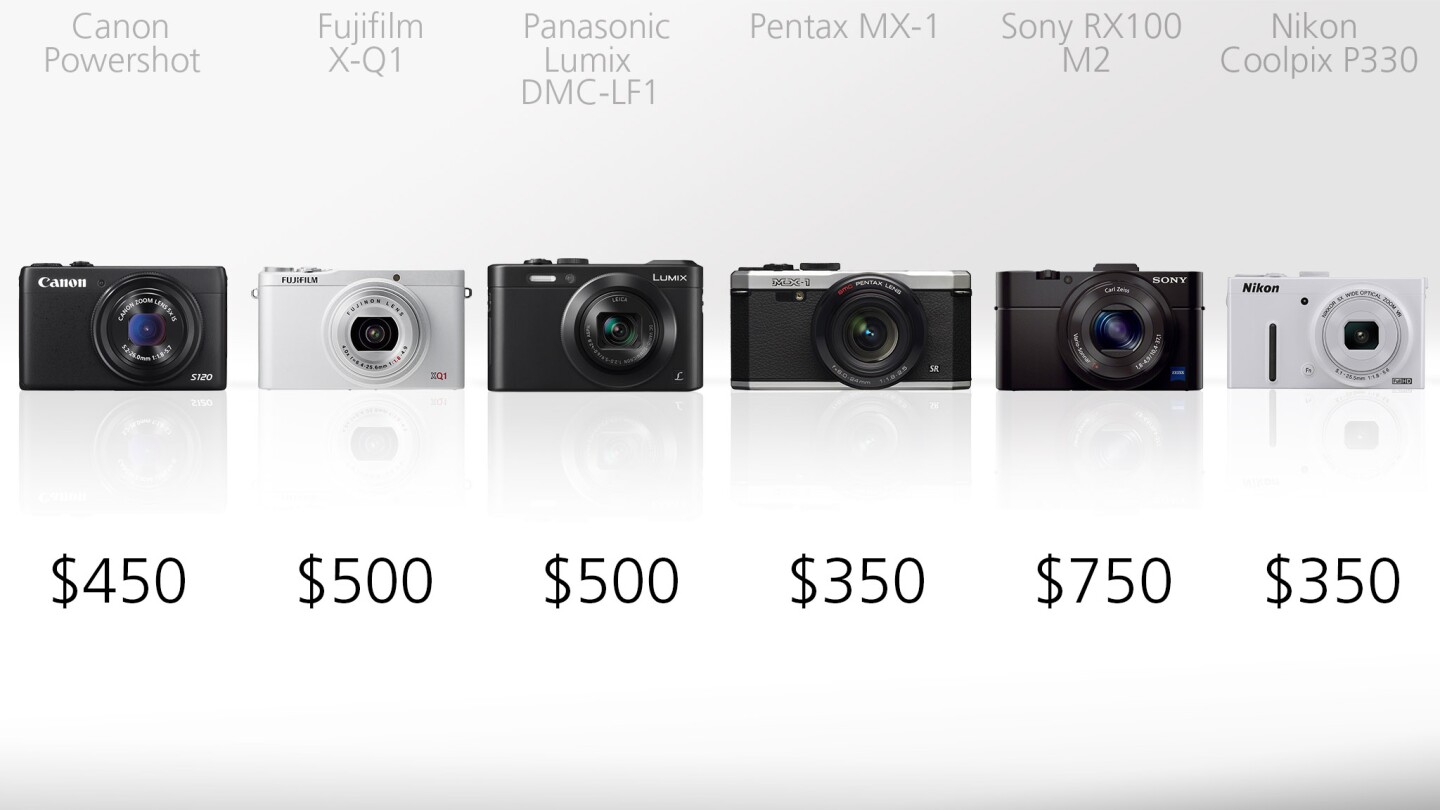In recent years the compact camera market has received a comprehensive battering from smartphones on one side, and interchangeable-lens cameras on the other. However, there are still some quality compacts out there worthy of your gadget-buying attention, as they can offer a great balance of image quality and portability. In this guide we'll take a look at some of our favorites.
Meet the cameras
Because we needed to narrow our selection down from the dozens of compact cameras which clutter the shelves of your local camera store, we're focusing on those which are both small enough to carry around all day, while at the same time offering an image quality bump from your smartphone to justify purchasing an additional device.
All of the cameras in our line-up have an optical zoom – something missing on all but the most Frankenphone of smartphones – and the majority also offer wireless connectivity for convenient image sharing. They also each boast a much larger sensor than you're likely to find on most smartphones (with the Nokia 1020 and 808 being the exceptions) and, as such, should produce better-quality images.
The cameras we'll be looking at are:
Anyone who has kept an eye on the compact camera market in recent years will notice that we've not included any of the manual-control-heavy enthusiast compacts like the Canon G16 and the Nikon Coolpix P7800. This is because they're often too big to be an all-day everyday type of camera, except for the most dedicated shutter-bug.
We've also (reluctantly) omitted fixed focal length compacts like the Nikon Coolpix A, the Ricoh GR, the Fujifilm X100S and the Sony RX1 from the comparison. While they can make a great compact for photographers who don't mind, or even enjoy, working with a fixed focal length, we're aware they're not for everyone, and are probably only best compared with each other.
Size

Most of the compacts here are of comparable size, measuring in at around 100 x 60 x 30 mm. Sure, you might not fit them in the pocket of a pair of skinny jeans, but this makes them small enough to carry with you most of the time.
Weight

Weighing in at close to 200 g, most of these cameras could be carried around without the excess weight feeling unnecessarily arduous.The two heavier models are the Sony RX100 M2 and the Pentax MX-1, as both feature a sturdy metal construction. The Sony has an aluminum design while the Pentax (which is even heavier) has brass top and bottom panels, which means you'll feel like you're using an old-school film camera … and will certainly notice carrying it around.
Sensor Size

While most smartphones feature 1/3.2-inch sensors which measure just 4.54 x 3.42 mm, the smallest here are 1/1.7-inch ones which are a much larger 7.6 x 5.7 mm. This means they're capable of taking in more light and should produce better-quality images. The Fujifilm X-Q1 has an even larger 2/3-inch type sensor (8.8 x 6.6 mm) while the Sony boasts a monster 1-inch type which measures 12.8 x 9.6 mm.
Megapixel Count

Twelve megapixels seem to be order of the day, which is perfectly reasonable for this sort of camera and sensor size range. This will be more than enough for most users, unless they need to print out huge copies of their images or crop into them heavily. The Sony makes a jump to 20 megapixels, but remember this is on a bigger sensor.
Focal Range (35-mm equiv.)

Because the cameras we're looking at have varying size sensors, it's only fair to compare their lenses using the 35-mm-format equivalent focal length. At the wide end of their focal ranges, all of the cameras come in between 24-mm and 28-mm. While it might not sound like much, the extra 4 mm could make the difference between fitting all of a scene into a shot, or not, especially if you're shooting in a restrictive space.
On the telephoto side of things there's even more variety, with the Sony and Fuji offering the least zoom capability with a 100-mm equivalent lens, while the Panasonic LF1 goes all the way to 200-mm.
Aperture

None of the lenses on these cameras offer a fixed aperture, meaning they all get slower the more you zoom. This means they need more light to operate well, and are less capable of producing a shallow depth or field. The best in this regard is the Pentax MX-1, which only goes from F1.8 to F2.5 at full zoom. While the Panasonic goes from F2 at the wide to F5.9 at the telephoto, it's worth remembering that this is over a longer range, which means at 100-mm it will still be faster than the Canon S120.
Autofocus

Most of the compacts here use a contrast detection autofocus system, while the Fuji X-Q1 employs a Hybrid AF which combines contrast and phase detection. In theory, this means it should be faster, while remaining accurate even in lower light situations.
FPS Burst Rate

With the exception of the Pentax MX-1, all of the cameras here are capable of shooting double digit frames per second. To put that into perspective, these are the same sort of speeds that you get on professional DSLRs.
However, while the Canon Powershot S120 is capable of 12.1 fps, it's only able to keep this going for five shots, after which it will slow down to a less impressive speed. And it's a similar story for the other cameras, either slowing down or stopping while they, or your memory card, catch up. Even the Pentax, which doesn't have an overly impressive top speed, can only keep it going at full-pelt for just over two seconds.
ISO Range

Because these cameras have larger sensors than those in most smartphones, they should be able to perform better in lower-light situations, and the ISO ranges on offer here certainly seem to back that up. While the core range of the Fujifilm X-Q1 and Nikon P330 max out at ISO 3,200, even they can be extended to offer equivalents of ISO 12,800 … but by the time you're there, your images will be a smudgy mess whatever camera you're using.
Image Stabilization

Anyone with shaky hands will be pleased to know that all of these compact cameras feature built-in image stabilization to help when shooting with slow shutter speeds or at long telephoto focal distances.
The Pentax MX-1 takes a different approach to the other cameras in that it uses sensor-shift technology to reduce the wobbles as opposed to optical lens-shift stabilization. Whether one method has a strong advantage over the other is a matter that's often contested between manufacturers.
Viewfinder

The Panasonic LF1 is the stand-out camera when it comes to built-in viewfinders … because it has one. This has indeed become a rare thing for a compact camera in recent years. The EVF means users are not forced to compose shots on the rear monitor, and can hold the camera in a way that may feel more natural for DSLRs or even film camera users.
Monitor

It seems that manufacturers have decided that 3-inch screens with resolutions around the 920K dot mark are what's needed on compact cameras. In fact, it's only the Sony RX100 M2 which features a higher-resolution screen. It, along with the Pentax MX-1, also have tiltable screens for composing shots in awkward positions. Notably, the monitor on the Canon Powershot S120 is a touchscreen which allows for gesture-based operation.
Storage Media

All of the cameras take SD memory cards, and there's nothing to write home about here unless you've got a pile of Sony Memory Stick Duo cards lying about which you could also use in the RX100 M2.
File Type

Photographers with an (understandable) aversion to only shooting JPEGs will be pleased to know that all of these compacts are capable of shooting RAW files, which hold up better in post-production.
Video Modes

Full HD 1080p video recording is available on all of these compact cameras, though at varying frame rates. The Canon Powershot S120 and the Fujifilm X-Q1 are the best, with 60 fps. The Sony is capable of 50 fps while the Nikon is 60i, the Panasonic 50i, and the Pentax 30 fps.
Wireless Capabilities

We're glad to say that cameras with built-in wireless capabilities are fast becoming the norm and while some manufacturers are dragging their heels, most of these cameras use Wi-Fi for the sharing of images and to enable features like remote shooting via Android or iOS apps.
While it doesn't have these features baked-in (though it does have GPS), the Nikon P330 can gain them via an optional adapter, leaving the Pentax as the only unconnected camera on our list. The Sony and the Panasonic stand out thanks to their use of NFC for easy pairing between the camera and an equally-enabled smart device.
Battery Life

You should be able to fire off a minimum of 200 shots on a single battery charge using any of these compacts which, given how compact cameras tend to be used (not for massive photo shoots), should be more than enough. The Sony has the best battery life and should be good for taking around 350 shots.
Price

The numbers speak for themselves, and while most of the cameras fall into a comparable US$350-500 price range, the Sony RX100 M2 is considerably more at $750.
Wrap-up
So there you have it. Compact cameras have come a long way in the past couple of years, and if you want an optical zoom in a device you can easily carry around all day, we don't think you can go wrong with any of these devices.
If you've got the budget and don't mind the extra weight over some of the lighter models, the Sony RX100 M2 is a very hard compact camera to beat. Last year we said the original RX100 was our compact of the year thanks to its larger than usual sensor. This year, with the addition of Wi-Fi and a tilting screen, Sony appears to have done it again.
But this isn't a one-horse race, as the Panasonic LF1 is a great choice if you need that extra bit of reach from a zoom, or indeed if you just don't like composing shots on a rear monitor and want a viewfinder. Meanwhile, the Pentax MX-1 has a certain retro-appeal thanks to its weighty brass-ended body, and the Canon S120 is small enough to almost forget you're carrying it around.
What we're saying is that only you can decide what combination of features and specifications make the ideal compact camera for you, but hopefully this guide has put you some way towards making that decision.






















